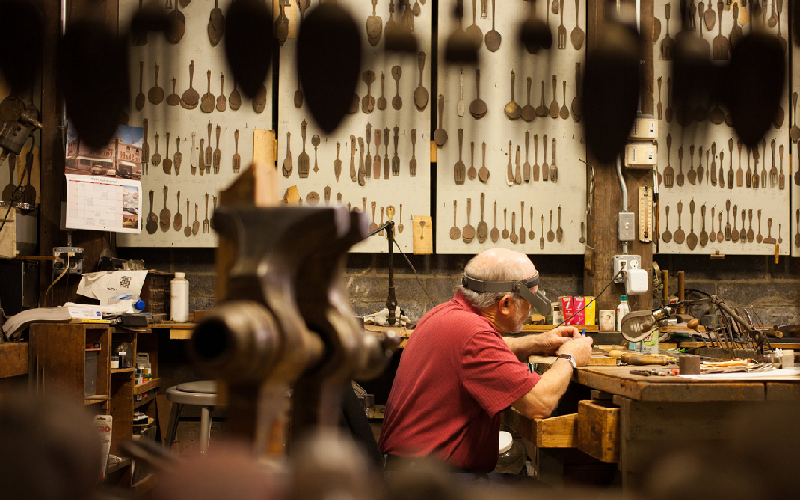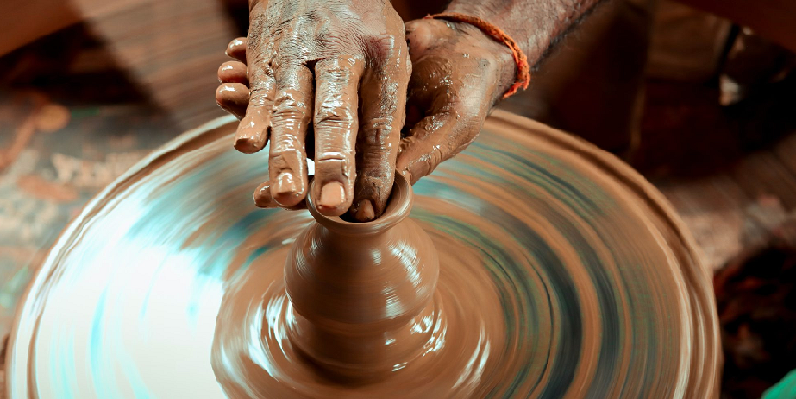
Traditional crafts and skills form the backbone of cultural heritage, reflecting the artistry and ingenuity of our ancestors. These crafts, from weaving and woodworking to metalworking, were not just practical skills but integral parts of daily life and community identity. Preserving these traditions is essential for maintaining a connection to our past, understanding our cultural roots, and ensuring that these invaluable skills are not lost to time.
Historical Context of Traditional Crafts and Skills
Understanding the historical context of traditional crafts and skills provides a window into the lives of our ancestors. These crafts have roots that stretch back centuries, evolving over time and playing a significant role in everyday life and cultural practices.
Origins and Evolution
Traditional crafts have diverse origins, often linked to the natural resources available in a particular region. Early examples of these crafts demonstrate how our ancestors adapted their skills to their environment, creating tools, clothing, and artworks that were both functional and beautiful.
Early Examples of Traditional Crafts
In the earliest days, traditional crafts were primarily about survival and utility. People created pottery to store food, wove fabrics to make clothing, and carved tools from wood and stone. These early crafts were crucial for day-to-day living, showcasing the resourcefulness and creativity of ancient communities.
Evolution Over Centuries
As societies developed, so did the complexity and variety of traditional crafts. Techniques were refined, and new materials were introduced, leading to more sophisticated and specialized forms of craftsmanship. The evolution of these skills often mirrored advancements in technology and changes in societal structures, reflecting broader cultural shifts.
Role in Daily Life
Traditional crafts were not just about making objects; they were woven into the very fabric of daily life. These skills had practical applications and were imbued with cultural and symbolic meanings, playing a central role in community and family traditions.
Functional Uses
Many traditional crafts served essential functions. For example, pottery was used for cooking and storage, textiles for clothing and shelter, and metalworking for tools and weapons. These crafts were vital for the survival and prosperity of communities, enabling them to harness their environment effectively.
Cultural Significance
Beyond their practical uses, traditional crafts held deep cultural significance. They were often involved in rituals, ceremonies, and celebrations, marking important life events and seasonal cycles. Crafts such as quilting, weaving, and carving became symbols of cultural identity and continuity, passed down through generations as treasured family traditions.

Methods of Passing Down Crafts and Skills
Passing down traditional crafts and skills from one generation to the next has been a crucial aspect of preserving cultural heritage. Various methods have been employed to ensure that these invaluable practices continue to thrive and evolve with each new generation.
Oral Tradition
Oral tradition has been one of the most ancient and effective methods of transmitting knowledge. Through stories, songs, and direct instruction, elders have imparted their expertise and wisdom to younger members of the community [1].
Storytelling and Oral Histories
Storytelling has always played a vital role in preserving and conveying traditional crafts and skills. Elders would share tales of their experiences, often embedding practical lessons and techniques within these narratives. These oral histories helped keep the memory of past practices alive and relevant.
Apprenticeships and Mentorships
Apprenticeships and mentorships were structured ways of passing down skills. Young individuals would learn directly from a master craftsman, observing and practicing under their guidance. This hands-on approach ensured that the intricate details of each craft were meticulously learned and perfected.
Written Records and Manuals
With the advent of writing, another method of preserving and transmitting crafts emerged. Written records and manuals provided detailed instructions and illustrations, making it easier to standardize and spread knowledge across regions and generations.
Craft Manuals and Guides
Craft manuals and guides became essential resources for learning traditional skills. These documents often contained step-by-step instructions, diagrams, and tips, allowing individuals to learn independently or supplement their practical training. They played a critical role in ensuring that complex techniques were accurately passed down.
Family Records and Diaries
Family records and diaries often included valuable information about traditional crafts. These personal documents provided insights into how specific techniques were practiced within families, preserving unique variations and methods. They served as intimate records of a family’s crafting heritage, handed down through the generations.
Hands-On Learning
Hands-on learning has always been at the heart of mastering traditional crafts. Direct practice under the supervision of experienced practitioners allowed skills to be honed and perfected over time.
Family Workshops and Practice
Family workshops were common places for learning and practicing crafts. Members of the family would work together, with older generations teaching the younger ones. This environment fostered a sense of community and continuity, ensuring that skills were retained and cherished [2].
Community Gatherings and Festivals
Community gatherings and festivals provided opportunities for broader transmission of skills. These events often included demonstrations, competitions, and collaborative projects, allowing individuals to learn from a variety of practitioners. They also reinforced the cultural significance of traditional crafts, celebrating and perpetuating these practices within the community.
Examples of Traditional Crafts
Traditional crafts encompass a wide range of skills and techniques, each with its own unique history and cultural significance. By exploring specific examples of these crafts, we can gain a deeper appreciation for the artistry and dedication involved in their practice.
Textile Arts
Textile arts have been a fundamental part of human culture for centuries, serving both practical and decorative purposes. These crafts often involve intricate patterns and techniques passed down through generations.
Weaving and Spinning
Weaving and spinning are among the oldest textile arts, with evidence dating back thousands of years. Weaving involves interlacing threads to create fabric, while spinning transforms fibers into yarn. These skills were essential for producing clothing and other textiles, often incorporating elaborate designs that reflected cultural identities.
Embroidery and Quilting
Embroidery and quilting are decorative textile arts that add beauty and meaning to everyday items. Embroidery involves stitching patterns onto fabric, often with symbolic motifs. Quilting, the process of sewing together layers of fabric, was used to create warm, durable blankets and artistic pieces that told stories and preserved memories.
Woodworking
Woodworking has been an essential craft throughout history, providing tools, furniture, and artistic creations. This craft showcases the versatility and beauty of wood, often requiring a deep understanding of the material and techniques.
Furniture Making
Furniture making is a woodworking skill that combines functionality with artistry. Craftsmen created everything from simple stools to elaborate cabinets, using various techniques to join, carve, and finish wood. The craftsmanship involved in making furniture ensured durability and often reflected the aesthetic preferences of different eras and cultures.
Carving and Whittling
Carving and whittling involve shaping wood into intricate designs and figures. These skills were used to create decorative objects, religious icons, and everyday items. Mastery of carving required precision and creativity, turning simple pieces of wood into detailed works of art [3].
Metalworking
Metalworking is a traditional craft that has been crucial for creating tools, weapons, jewelry, and other items. This craft involves manipulating metals through techniques like forging, casting, and engraving.
Blacksmithing
Blacksmithing is the craft of working with iron and steel to create tools, hardware, and decorative items. Blacksmiths used heat and hammers to shape metal, producing essential items for daily life and beautiful wrought ironwork. The skill and strength required for blacksmithing made it a respected and vital trade.
Jewelry Making
Jewelry making involves crafting decorative pieces from precious metals and gemstones. This craft combines artistic design with technical skill, resulting in intricate items that are often symbolic and highly valued. Traditional jewelry making techniques have been passed down through families and communities, preserving unique styles and methods.
Regional Variations in Traditional Crafts
Traditional crafts exhibit distinct regional characteristics, influenced by local resources, cultural practices, and historical contexts. These regional variations highlight the diversity and richness of global craftsmanship.
A. European Traditions
Europe has a rich history of traditional crafts, each region offering unique techniques and styles. These crafts often reflect the cultural and historical influences that have shaped the continent.
Scandinavian Knitting
Scandinavian knitting is known for its intricate patterns and use of high-quality wool. Techniques like Fair Isle and Nordic knitting produce colorful and complex designs, often inspired by nature and folklore. This craft has been passed down through generations, preserving regional styles and methods [4].
Italian Glass Blowing
Italian glass blowing, particularly from the island of Murano, is renowned for its artistry and innovation. This craft involves shaping molten glass into beautiful and functional objects. Murano glassmakers are celebrated for their skill in creating intricate designs and vibrant colors, a tradition that dates back to the Roman Empire.
Asian Traditions
Asia is home to a wide array of traditional crafts, each deeply embedded in the cultural fabric of its respective region. These crafts often involve meticulous techniques and have significant cultural and spiritual meanings.
Japanese Pottery
Japanese pottery, such as Raku and Kutani, is distinguished by its aesthetic simplicity and attention to detail. Techniques like hand-building and wheel throwing are used to create both functional and decorative pieces. Japanese pottery often incorporates natural elements and reflects the philosophy of wabi-sabi, which values imperfection and transience.
Indian Block Printing
Indian block printing is a traditional textile art that involves stamping patterns onto fabric using carved wooden blocks. This craft is known for its vibrant colors and intricate designs, often depicting floral and geometric motifs. Block printing has been a part of Indian culture for centuries, with each region developing its own distinctive style.
African Traditions
African traditional crafts are characterized by their use of natural materials and vibrant designs. These crafts often play a significant role in social and cultural practices, serving both functional and symbolic purposes.
Kente Cloth Weaving
Kente cloth weaving is a traditional Ghanaian craft that produces colorful and symbolic textiles. Each pattern and color in Kente cloth carries specific meanings, often related to history, philosophy, and ethics. This weaving technique has been passed down through generations, preserving its cultural significance and intricate designs.
Beadwork and Jewelry
African beadwork and jewelry are renowned for their beauty and craftsmanship. Beads are made from a variety of materials, including glass, bone, and clay, and are often used to create elaborate necklaces, bracelets, and other adornments. Beadwork holds cultural significance, with patterns and colors symbolizing social status, heritage, and personal achievements.
References
[1] Traditional craftsmanship
[2] Preserving the past, reviving ancient craft skills for the future
[3] Traditional crafts: Once these skills are lost, they’re lost forever
[4] The History of Traditional Craftsmanship

